Are you paying attention? Key findings from the Yahoo, OMG and Amplified Intelligence attention study and what they mean for marketers

A person only has so much attention to give and human unpredictability will always remain the ultimate variable. That’s why it’s our job as marketers to really earn it.
Consumer attention is notoriously hard to capture. And in an increasingly noisy digital space, impressions, views and clicks don’t tell the whole story when deciphering ad impact. Here, Paul Sigaloff, Vice President and Head of APAC at Yahoo, shares key findings from one of the largest mobile-web attention studies ever conducted.
Attention is arguably the hottest metric out there right now and brands big and small are clamouring to increase their share.
That’s why Yahoo, in partnership with OMD Worldwide and Amplified Intelligence, has released a global study to reveal when people pay attention to digital ads, and when they don't.
We already know today’s consumers habitually switch between platforms, dividing their hard-earned attention across multiple digital touch points. Yet as our research shows, attention isn’t influenced by a single factor, but many
Platform, ad format, audience, brand, creative and relevance all play a role in winning audience attention. And it’s only by properly understanding the confluence of these factors that you can start to make gains in market share.
Attention ≠ Views
Let’s make one thing crystal clear: views and attention are not the same thing. Attention is a completely separate metric which takes into account both memory retention and market share gain. Whereas views is simply a measure of people who have viewed your ad - possibly without even noticing.
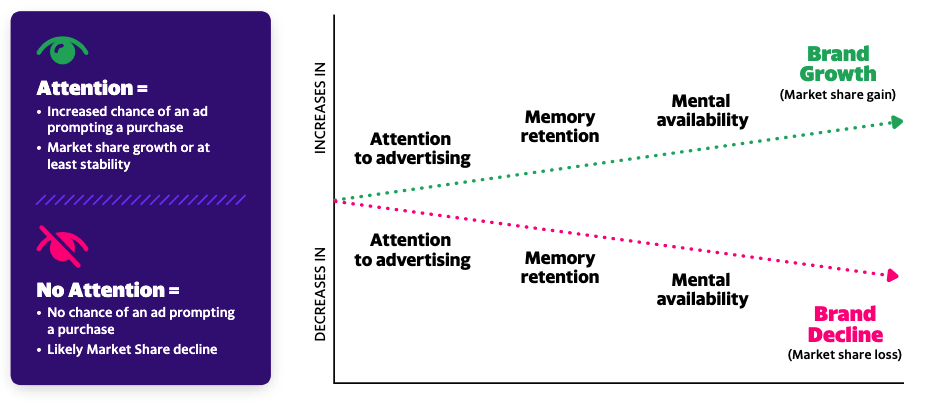
Whether someone pays attention to an ad or not directly impacts a brand's growth, and this is not a new learning. However, what is new is our understanding of how nuanced consumer attention really is, and how marketers can begin to alter the way they engage audiences with different ad formats.
So what really captures audience attention these days? According to the research, it starts with video. When analysing attention by format, video - leveraging the combined impact of visuals and motion - was the top performer. With the target threshold for active attention at 2.5 seconds, the average active attention for video formats was 2.73 seconds.
But not all video is created equal - length is a surprisingly important factor. While ads don’t need to be ultra short to gain attention, there is a sweet spot. When comparing a 15 second ad to a 30 second ad, 15 second video ads delivered 2.8 times more active attention than 30 second ads.
Drawing you in
Imagine you’re building something for the first time and you’re after some instructions. Would you A) read a still image or B) watch a video walkthrough? I for one would pick the latter, more interactive option.
The same goes for digital ads. The research shows immersive formats that move with the user’s experience garner the most attention. Interscroller, video interscroller and native video were the highest impact formats holding 3.3, 3 and 2.8 seconds of active attention consecutively.
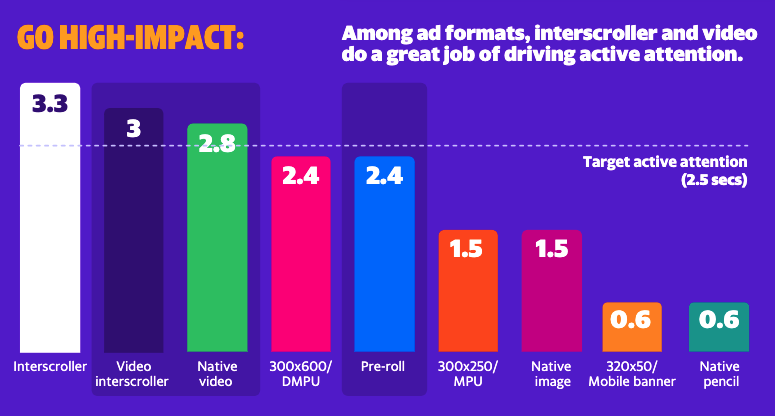
A reason for this could be related to the screen size captured by the ad. Interscrollers for example are ads that reveal the content as the reader scrolls down the visited page. When the user scrolls to reveal 85% of the placement, it can snap to take over the entire screen.
While attention spans vary, it’s clear that larger real estate gets more attention.
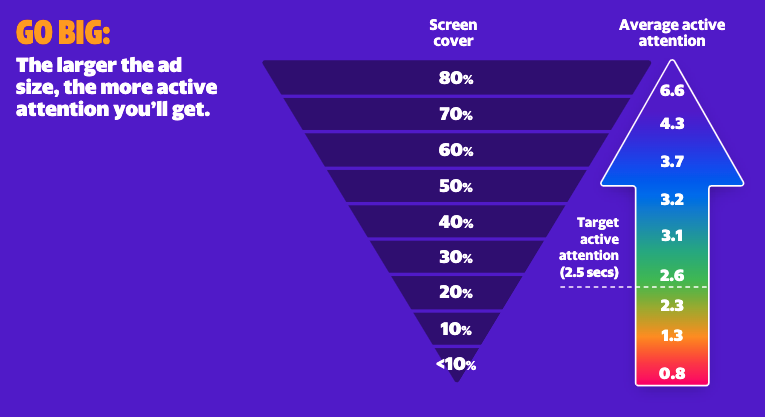
Brands that can master these immersive ad formats are able to draw in audiences and make their message stand out for viewers. But to create contextual relevance, the question remains, when and where are consumers paying the most attention?
Eyeballs in the right place at the right time
Unsure of the ideal environment to place your ad? It turns out sports and finance content are your best bets.
For both category-relevant and irrelevant interscroller ads, the research showed Yahoo’s sports and finance content delivered the highest levels of attention
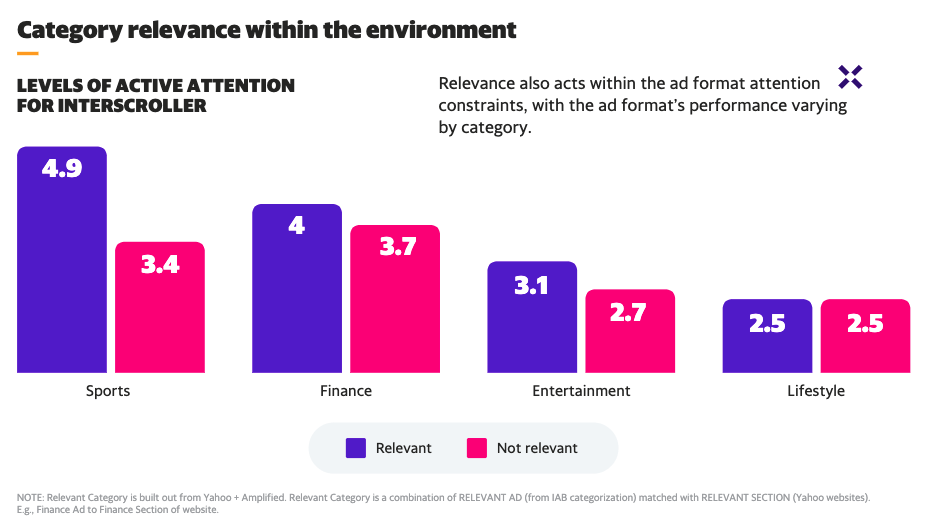
But what about timing? Well, it turns out that anytime is a good time to capture attention.
According to the research, time of day and day of the week are not significant factors in capturing consumer attention. Active attention doesn’t vary across the day from pre-morning to evening, averaging 1.6 seconds. Passive attention was the same, with as little variance as 1.1 seconds across the day.
The same can be seen comparing days of the week. Whilst Wednesday saw slightly higher passive attention, the overall discrepancy was small.
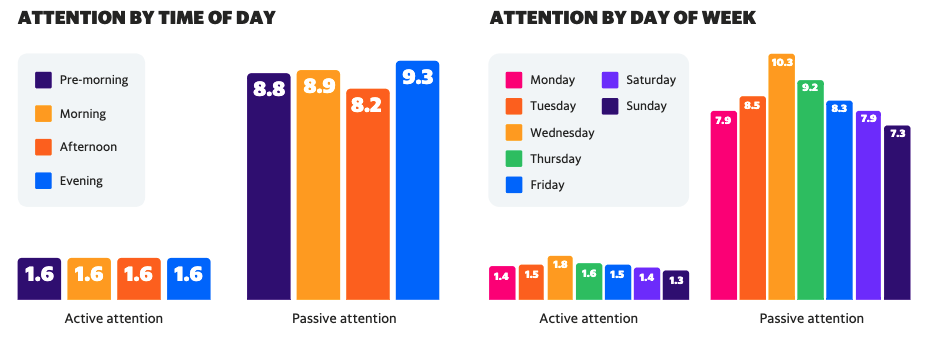
Can I have your attention, please?
As we enter into the holiday shopping period, there’s never been a better time to really understand how to capture attention.
Finding the sweet spot, though, is no simple task. But by pulling the right levers to control format, size, interactivity, creative, context, and audience, marketers can give themselves the best chance of success.
A person only has so much attention to give and human unpredictability will always remain the ultimate variable. That’s why it’s our job as marketers to really earn it.
